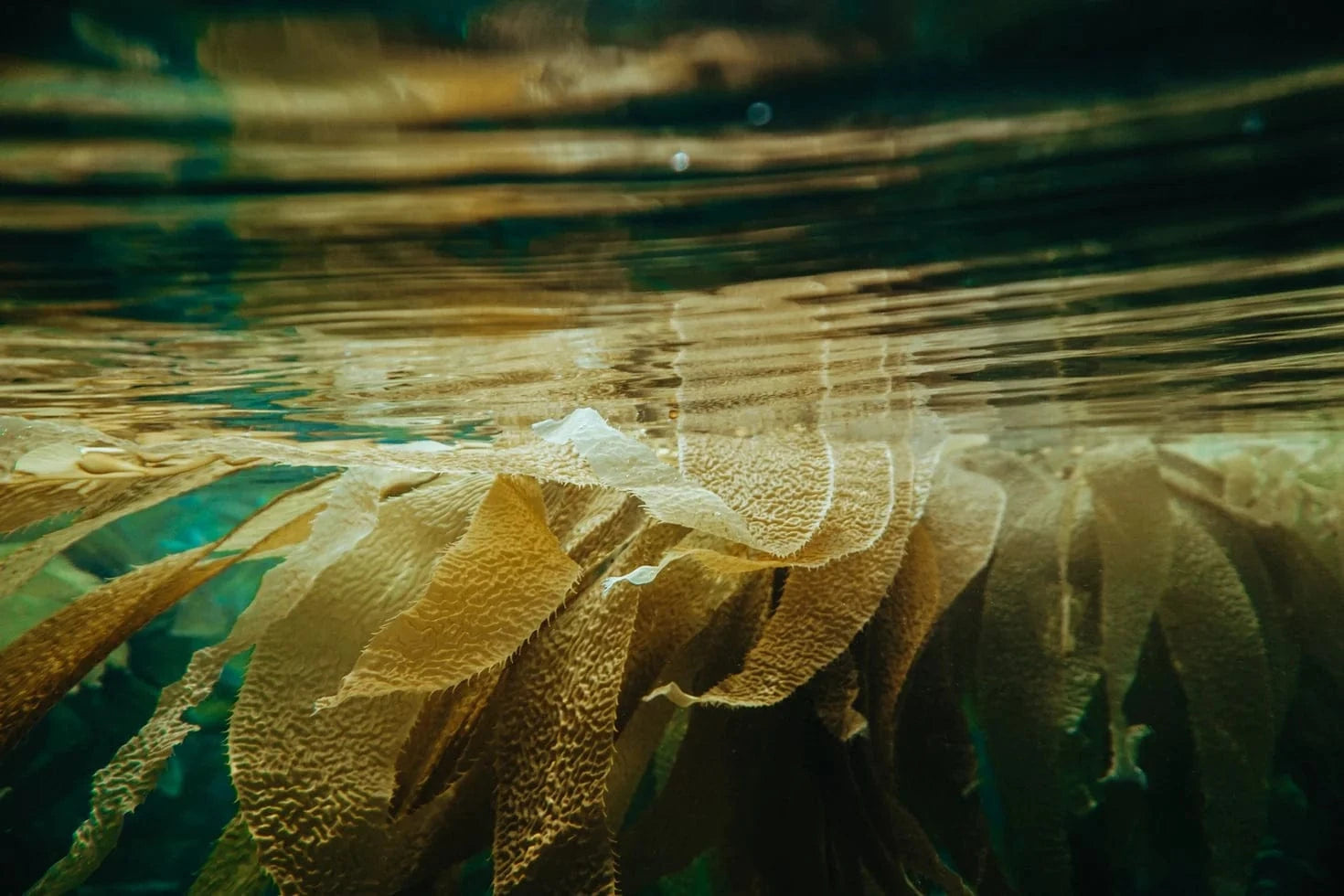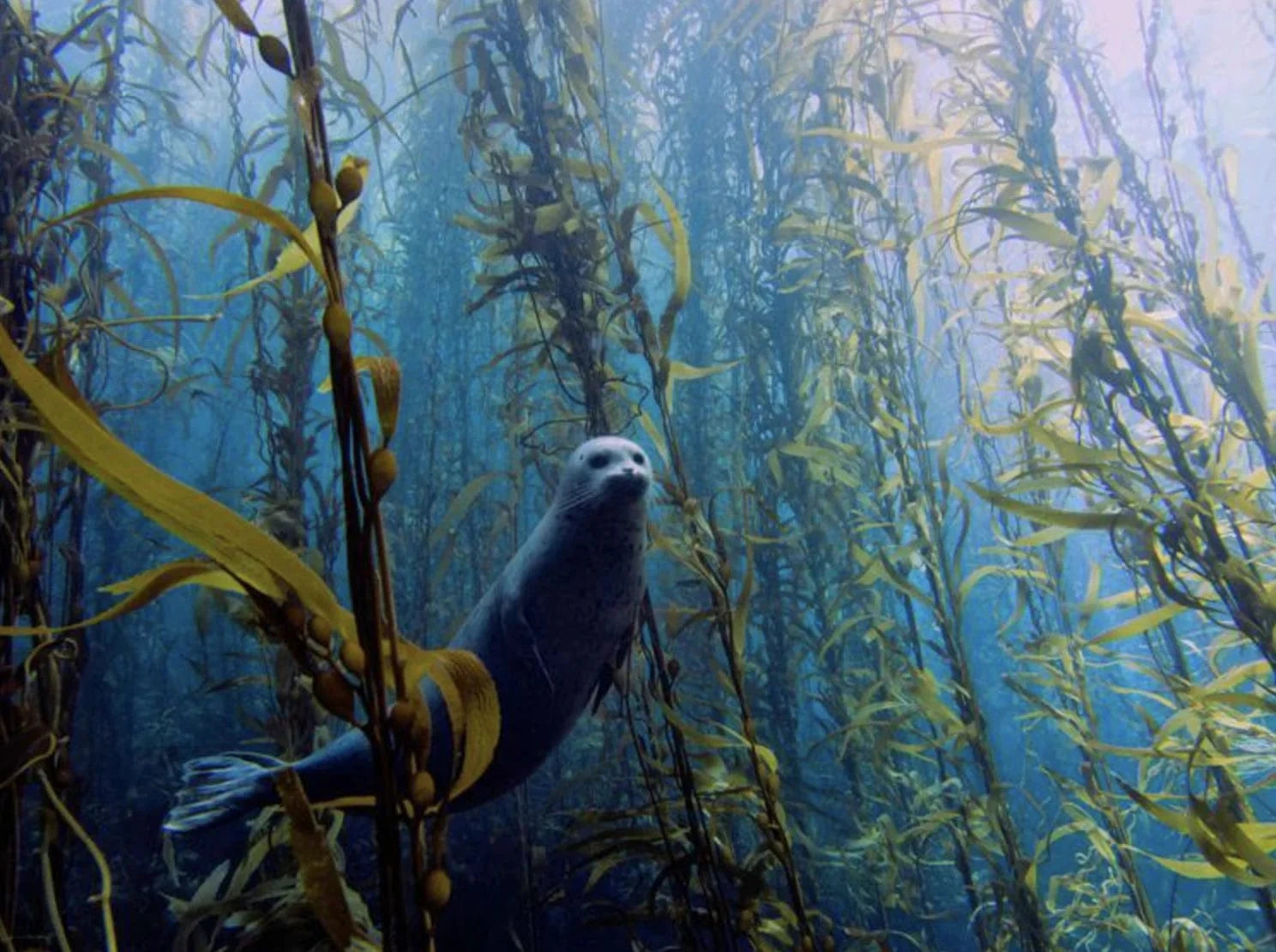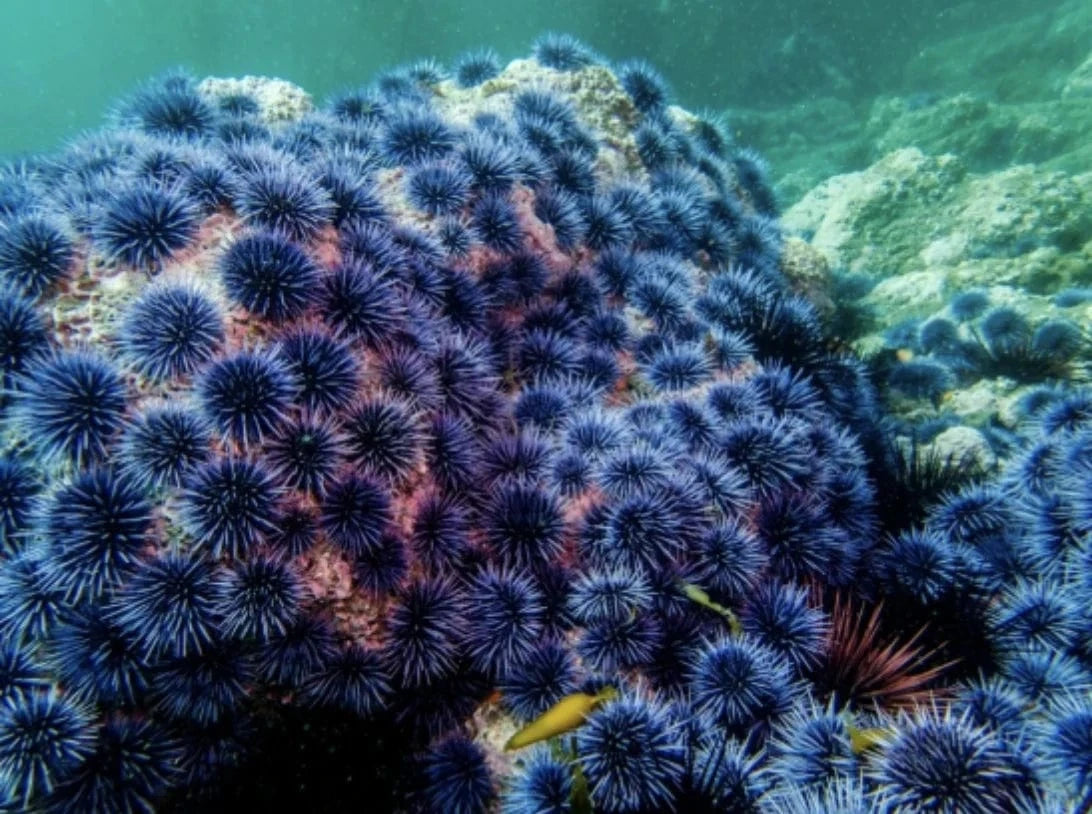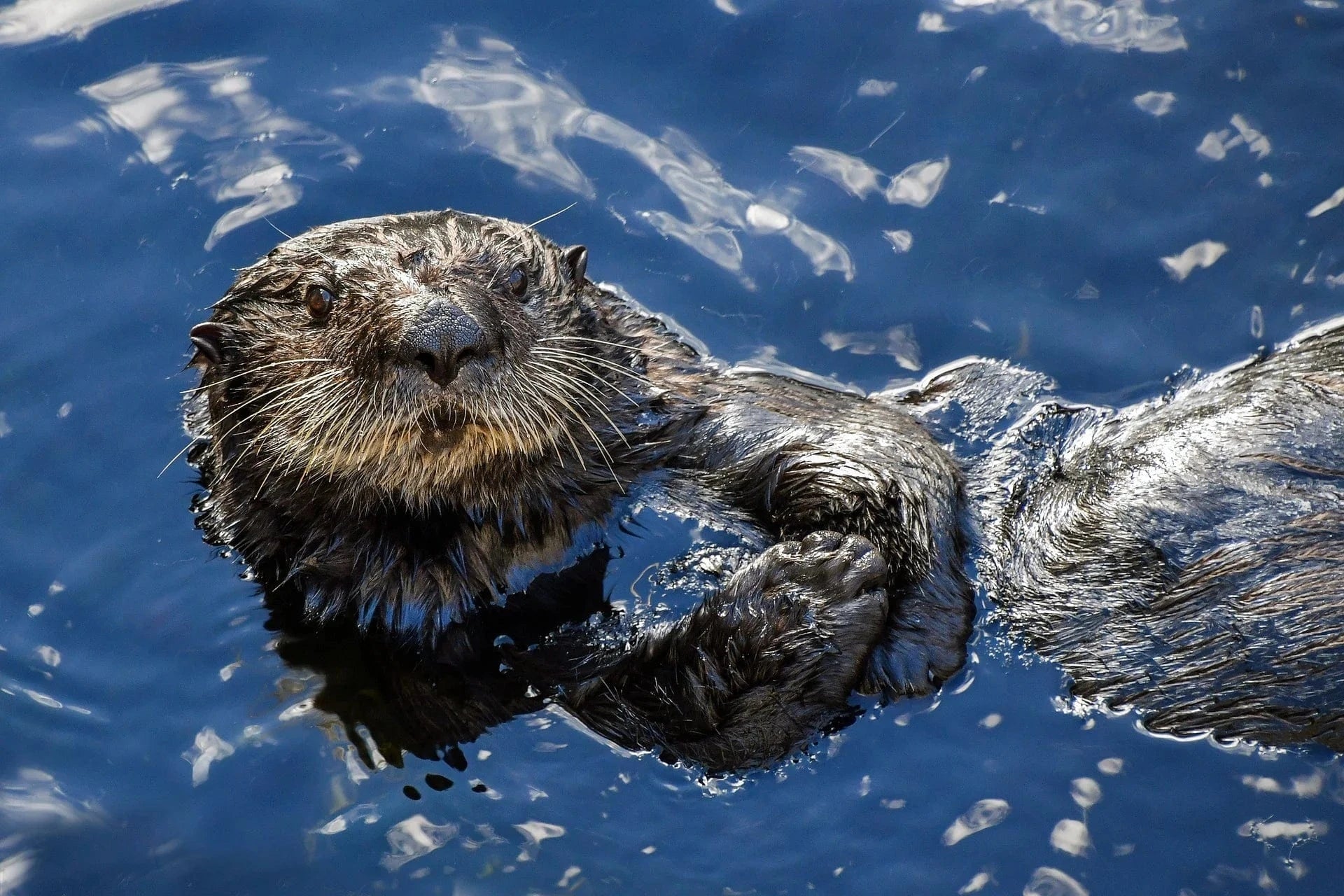
Get news, updates, & event Info delivered right to your inbox:
What is a Kelp Forest?
Kelp (order Laminariales) are large brown seaweeds, with 30 different genera that live in cool waters close to the shore. While kelp is similar to a plant and can look like "trees that grow underwater", they are not plants, as they lack tissues to carry water and food from one part to another.
In order to grow, kelp will attach to the sea floor and will grow upwards towards the ocean surface, relying on sunlight to generate food and energy. This is why kelp is a coastal species and needs shallow, clear water to survive.
While kelp isn’t technically a tree, kelp growths are called “kelp forests” because they form dense groupings, tower above the ocean floor, and perform many of the same ecosystem functions that forests do on land — including providing nutrition and homes for biodiversity. And they’re no less important — or threatened — than their terrestrial counterparts.
Where Does Kelp Grow
Kelp forests are found along rocky shorelines, mainly on the Pacific coast, stretching from Alaska to Baja, California. Kelp forests grow further from the tropics than seagrass beds, coral reefs and mangrove forests, meaning that they don't overlap with those ecosystems. However, similar to the above ecosystems, they're very important for biodiversity, as they provide an underwater habitat to thousands of marine species of fish, invertebrates and other algae.

How Does Kelp Grow
In the beginning, kelp grows as spores, released by the millions by their parent kelp, which are classified as sporophytes. These tiny spores then grow into tiny male or female gametophytes, which can produce either sperm or eggs. After fertilization occurs, the free-floating embryos quickly grip the ocean floor and develop into mature plants.
Reliant on light for photosynthesis, they grow along rocky coastlines at depths ranging from 6 to 90+ ft. Tiered like a terrestrial forest with a canopy and several supporting layers below, kelp forests do best in cold, nutrient-rich upwellings (areas where the ocean layers overturn, pushing cool, nutritious bottom waters to the surface). And similar to trees, they have root-like “anchors” called holdfasts that keep them from floating away. But unlike trees, kelp “roots” don’t burrow deep under the surface, but rather grip tightly onto the ocean floor.
Kept afloat by pneumatocysts (gas bladders), kelp grow rapidly toward the ocean's surface — and when we say rapidly, we mean it! Although their typical growth rate is around 10 inches a day, giant kelp can grow up to 2 ft in ideal conditions. Bull kelp, another common variety, grows 4 inches a day — which is still pretty impressive if you ask us!
A perennial, Giant Kelp can live for up to 7 years if it isn’t uprooted by a storm or devoured by hungry sea-dwelling herbivores. Bull kelp, an annual, goes through its entire life cycle in just 1 year, but both have a two-stage growth trajectory.

Why Are Kelp Forests Important
Kelp forests are important because they form a dense barrier between coastlines and damaging waves, providing food and shelter to thousands of marine animal species, as well as other algae.
Similar to coral reefs, mangrove forests, and warm-water seagrass beds, kelp forests provide important underwater habitat and are home to many different animal species, as well as other algae species, including fish, shellfish, sea urchins, snails and sea otters.
Larger marine mammals like sea lions, harbor seals, and sea otters use kelp forests for feeding and protection from predators. Connected to water and sky, sea birds like gulls, terns, snowy egrets, great blue herons, and cormorants also benefit. And on rare occasions, even grey whales have been spotted seeking refuge from predatory killer whales.
Some animal species use kelp forests as spawning grounds, while other marine animals use kelp as a place to stay to raise their young in relative safety. We say relative, because sharks and other marine mammals hunt in the long corridors that form between rows of individual algae strands.

Why Human Activity is a Threat to Kelp Forests
Knowing that kelp can grow up to 2 ft per day, you might think they’re virtually invincible. But unfortunately, that isn’t the case for this incredible underground ecosystem. In fact, from Tasmania and Australia to Norway, western Europe, and the west coast of North America, kelp forests are under dire threat. And while warming ocean waters are taking a toll (and will continue to do so if climate change continues unchecked), the biggest threat comes from sea urchins, who will eat through an entire kelp forest in no time.
Unfortunately, when the last kelp strand has been cut down, large herds of sea urchins respond to the stress of starvation by becoming aggressive and growing larger, more powerful teeth. These new teeth allow them to crunch through just about anything in their path, which only compounds their destructive influence.
A remarkable phenomenon of marine ecology, "urchin barrens" occur when urchin populations grow to such extraordinary densities that the entire seafloor is cleared of vegetation, leaving behind an ecological wasteland. And as they gather and multiply, a virtually impenetrable barrier is formed, which prevents anything else from coming back. Unfortunately, once established urchin barrens will persist indefinitely.

Kelp Forest Conservation
While there is little hope for kelp forests that have already been decimated and replaced by urchin barrens — or for those that grow in rapidly warming waters — scientists have been investigating and experimenting with different ways to help for some time. And what they’ve discovered is that sea otters are to kelp forests what wolves are to Yellowstone.
Because as it turns out, sea otters love urchins just as much as urchins love kelp! And if left alone, they will happily keep the urchins in check. But when they decline, urchin populations explode. For this reason, sea otters are considered a keystone species (similar to the stone at the top of an arch that prevents the other stones from falling down, keystone species prevent the collapse of entire ecosystems) in kelp forests. Another species that loves to dine on sea urchins? Rock lobsters.
There you have it — everything you didn’t know you needed to learn about kelp forests! The next time you visit the coast, keep your eyes peeled — if you’re lucky, you might just spot their characteristic tendrils swaying slowly with the tides.
Looking to learn more? Discover the different types of forests from around the world.
Get news, updates, & event Info delivered right to your inbox:
Related Posts
11 Eco-friendly Gift Ideas for Valentine's Day
28/01/2025 by One Tree Planted
8 Amazing Bamboo Facts
14/01/2025 by Meaghan Weeden
Inspirational Quotes About Trees
09/01/2025 by Meaghan Weeden
Popular On One Tree Planted
8 Amazing Bamboo Facts
14/01/2025 by Meaghan Weeden
Inspirational Quotes About Trees
09/01/2025 by Meaghan Weeden
How to Reduce Waste: 21 Ideas for Zero Waste Living
07/01/2025 by Meaghan Weeden
Fundraising Disclosures

Be Part of the
Restoration Movement
The Grove is more than just a monthly giving program: it's a vibrant community of individuals who are dedicated to reforestation and environmental restoration on a global scale.
As a member of The Grove, you affirm your commitment to restoring forests, nurturing biodiversity, and fostering positive global change.



